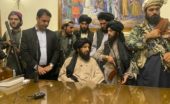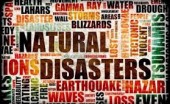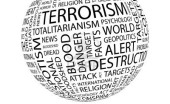Molly Minturn - My family is heartbroken to share that my father died in surgery on Monday, Feb. 10. It…
The many faces of Al Qaeda
Written by Diana Thebaud Nicholson // July 10, 2007 // Middle East & Arab World, Terrorism, U.S., World // Comments Off on The many faces of Al Qaeda
Stratfor (Strategic Forecasting) 10 July 2007
By Peter Zeihan
With all the talk about al Qaeda “leaders,” al Qaeda “factions” and militants with “links” to al Qaeda, it is useful to take a step back and clarify precisely what al Qaeda actually is. Al Qaeda is a small core group of people who share strategic and operational characteristics that set them apart from all other militants — Islamist or otherwise — the world over. All signs indicate this group is no longer functional and cannot be replicated. Whether or not Osama bin Laden is still alive, al Qaeda as it once was is dead.
Strategically, these men envisioned a world in which the caliphate would rise anew as a consequence of events they would set into motion. The chief obstacle to this goal was not the United States but the panoply of secular, corrupt governments of the Middle East. Al Qaeda knew its limited numbers precluded it from defeating these governments, so it sought to provoke the Muslim masses into overthrowing them. Al Qaeda also knew it lacked the strength to do this provoking by itself so it sought to trick someone more powerful into doing it.
By al Qaeda’s logic, an attack of sufficient force against the Americans would lure the United States to slam sideways into the Middle East on a mission of revenge, leading to direct and deep U.S. collaboration with those same secular, corrupt local governments. Al Qaeda’s hope was that such collaboration with the Americans would lead to outrage — and outrage would lead to revolution. Note that the 9/11 attacks were not al Qaeda’s first attempt to light this flame. The 1998 U.S. Embassy bombings and the 2000 USS Cole bombing were also the work of this same al Qaeda cell, but the attacks lacked the strength to trigger what al Qaeda thought of as a sufficient U.S. response.
The Real Difference
But al Qaeda is hardly the first militant group to think big. What really set al Qaeda apart was its second characteristic — its ability to evade detection. That ability was part and parcel of the way in which al Qaeda formed. Al Qaeda’s roots are not merely within the various militant groups of the Arab Middle East but deep within the geopolitical struggles of the Cold War. Many of the mujahideen who relocated to Afghanistan to resist the Soviet invasion found themselves recruited and funded by Saudi intelligence, equipped and tasked by U.S. intelligence and managed and organized by Pakistani intelligence.
This exposure not only leveraged the Afghan resistance’s paramilitary capabilities but also gave the mujahideen a deep appreciation for, and understanding of, the strengths and weaknesses of the U.S. and Soviet intelligence systems. When the Cold War ended, some of those mujahideen reconstituted their efforts into what came to be known as al Qaeda, and those deep understandings became part of the organization’s bedrock.
Such knowledge enables al Qaeda to operate beneath the radar of nearly all intelligence agencies. It knows how those agencies collect and analyze intelligence, where the blind spots are and, most important, how long it takes for an agency to turn raw information into actionable intelligence.
This characteristic is al Qaeda’s greatest asset. Al Qaeda’s standards of operation assume that intelligence agencies are always waiting and watching, and only al Qaeda’s understanding of those operations keeps the “base” from being busted. Operational security — not operational success — is al Qaeda’s paramount concern; its attacks are meticulously planned, fantastic in scope and sacrificed in a heartbeat if the leadership suspects a breach in security. This makes al Qaeda nearly impossible to track.
It also means that al Qaeda, by necessity, is a very small, close-knit group. The organization’s core — or the apex leadership, as we often call it — consists of little more than Osama bin Laden, Ayman al-Zawahiri and a double handful of trusted, heavily vetted relationships stretching back more than a decade. Disposable operatives with minimal training can be picked up for specific missions, but these people cannot do anything very complex (such as infiltrate a foreign country and hijack a civilian airliner).
Replacement of lost assets within this small group is negligible due to security concerns. Ultimately, the same security protocols that empowered al Qaeda to be a player of strategic scope are what removed al Qaeda from the chessboard.
Once the CIA and its affiliated allies named al Qaeda public enemy No. 1, al Qaeda’s security instincts became its greatest liability. The rapid U.S. invasion of Afghanistan caught al Qaeda off guard — the group had assumed it would have months of U.S. pre-mission staging before the invasion, a lesson it learned from watching the first Gulf War. The quick U.S. response meant al Qaeda was forced to go into hiding before it had fully secured redundant communication, funding and travel routes. Intelligence agency efforts to penetrate al Qaeda forced the group to constrict information flow, limit financial transfers, reduce recruiting and abandon operations. Once the United States succeeded in co-opting Saudi assistance against al Qaeda in 2003 — something brought about both by a U.S. presence in Iraq and al Qaeda’s own efforts to destabilize its ideological homeland — al Qaeda’s star stopped falling and started plummeting.
Al Qaeda has not only failed in its attempts to trigger region-wide uprisings against the Middle East’s secular governments, it has also lost the ability to launch strategically meaningful attacks — that is, attacks resulting in policy shifts by its targets. Al Qaeda can operate to a certain degree in regions where it has allies, many of whom flowed through its training camps in the 1990s, but the ability of the group that planned the 9/11 attacks to operate beyond the Middle East and South Asia seems to have disappeared. Attrition after years of confrontation with the Americans, coupled with self-imposed isolation, has rendered al Qaeda useless as a strategic actor. Not only is its ability to provide command and control nonexistent, but its self-enforced invisibility and inactivity have undermined its credibility.
Furthermore, al Qaeda has left no one truly capable of taking up its mantle. The training camps in the 1990s processed hundreds of would-be jihadists, but the quality of that training for the rank and file has been exaggerated. Most of it was a combination of poor conventional combat training and ideological indoctrination. Hence, most “veterans” of those camps have neither access to the core al Qaeda leadership nor the operational security or tactical training that would allow them to reconstitute a new elite core. They are no more members of the real “al Qaeda” than today’s skinheads are members of the real Nazi party.
By the only criterion that matters — successful attacks — al Qaeda has slipped from readjusting global priorities (9/11) to contributing to the change in government of a middling U.S. ally (the March 2003 Spain attacks) to affecting nothing (the 2005 London bombings). No attacks since can be meaningfully linked to al Qaeda’s control, or even its specific foreknown blessing. Al Qaeda had hoped for a conflagration of outrage that would sweep away the Middle East’s political order; it only managed to raise a few sparks here and there, and now it is a prisoner of its own security.
Yet, public discussion of all things “al Qaeda,” far from fading, has reached a fever pitch. But this talk — all of it — is about a fundamentally different beast.
Enter Al Qaeda the Franchise
It all started with Abu Musab al-Zarqawi, who put himself forward as the leader of the Iraqi node of al Qaeda in 2004. While one can argue that al-Zarqawi might have been through an al Qaeda training camp or shared many of bin Laden’s ideological goals, no one seriously asserts he had the training, vetting or face time with bin Laden to qualify as an inner member of the al Qaeda leadership. He was a local leader of a local militant group who claimed an association with al Qaeda as a matter of establishing local gravitas and international credibility. Other groups, such as Southeast Asia’s Jemaah Islamiyah, had associations with al Qaeda long before al-Zarqawi, but al-Zarqawi was the first to claim the name “al Qaeda” as his own.
For al Qaeda, prevented by its security concerns from engaging in its own attacks, repudiating al-Zarqawi would make the “base” come across as both impotent and out of touch. Accepting “association” with al-Zarqawi was the obvious choice, and bin Laden went so far as to issue an audio communique anointing al-Zarqawi as al Qaeda’s point man in Iraq.
Others have also embraced the al-Zarqawi/al Qaeda association, as dubious as it was. Al Qaeda’s operational security protocols — and its ongoing presence just beyond the United States’ reach in northwestern Pakistan — meant that destroying al Qaeda (the real al Qaeda) was at best a difficult prospect. But al-Zarqawi was local and active and clearly valued launching attacks over maintaining hermetically sealed security. Al-Zarqawi could be brought down. And just as al-Zarqawi’s “association” with al Qaeda increased his street cred with the Arab world, that “association” also increased his value to the U.S. military as a target. Taking down an “al Qaeda-linked terrorist” was much better for purposes of public relations and funding than taking down any random militant. The media, of course, stand ready to help; reporting on a militant with direct connections to bin Laden is sexy — even if that connection was only catching a glimpse of Big “O” walking by during breakfast.
The result has been the formation of an odd iron triangle among an al Qaeda desperate for relevance, local jihadists seeking a fast track to importance and Western intelligence and law enforcement seeking credibility and funding. In the common lexicon, al Qaeda is no longer that core of highly trained and motivated individuals who tried to change the world by bringing down the World Trade Center, but a do-it-yourself jihadist franchise that almost anyone can join. Some nodes are copycats who look to the real al Qaeda for inspiration; others are existing militant groups — such as Algeria’s Salafist Group for Preaching and Combat, now called the al Qaeda Organization for the Countries of the Arab Maghreb — that can identify with their ideological brethren. But few to none have any real connections to al Qaeda.
Violence is certain to continue, but the lack of meaningful attacks in the West in general and the United States in particular suggests al Qaeda’s degraded capacity and the West’s improved security have minimized the chances of a geopolitically significant attack for the next several years.
This does not mean would-be “al Qaeda” groups are not dangerous, or that the “war on terror” is anywhere near over. While some of the would-be al Qaeda groups almost seem comical, others are competent militants in their own right — with al-Zarqawi perhaps being the most lethal example. Their numbers are also growing. The ongoing war in Iraq has provided potential militants across the Islamic world with the motive to do something and the opportunity to gain some serious on-the-job training. Just as Soviet operations in Afghanistan created a training ground for a generation of Middle Eastern militants in the 1980s and 1990s, the Iraq war is in part a crucible for the next generation of Arab militants. Add in al Qaeda’s offer of open association and we will be hearing from dozens of “al Qaedas” in the years to come.
Luckily, links between these new groups and their erstwhile sponsor are limited mostly to rhetoric. There might be a few thousand people out there claiming to be al Qaeda members, but the real al Qaeda does not exercise any control over them. They are not coordinated in their operations or even working toward a common goal. And while many of these new al Qaedas might be competent militant groups, they lack the combination of strategic vision and obsession with security that ultimately allowed the original al Qaeda to move mountains.
Top it off with terminology buy-in from Western intelligence, law enforcement and the media and the result is a war literally without end; the definition of al Qaeda is stretched by nearly any player to fit nearly any political need. The United States is now waging a war against jihadism as a phenomenon, rather than against any specific transnational jihadist movement.
Back to Square One?
The political situation in Pakistan has long imposed an unstable stasis on what many feel should have been the real focus of the war on terror all along. Since escaping from Afghanistan in 2001, the true al Qaeda has spent most of its time taking refuge in northwestern Pakistan, where a mix of political complications and ethnic and tribal allegiances have allowed it to stay out of harm’s way.
The United States has been aware of al Qaeda’s presence there, but ultimately has not attacked for three reasons. First, al Qaeda’s internal security protocols forced the organization to isolate itself. During a time when the United States had a great many fish to fry, al Qaeda seemed to have put itself into lockdown; it was issuing videos, not starting wars like Hezbollah or reconstituting like the Taliban. Second, while U.S. intelligence knows the region in which al Qaeda resides, it has never gotten enough detail to allow for airstrikes to take care of business. Such not-quite-there intelligence has always been just diffuse enough to necessitate boots on the ground — and raise the specter of a disastrously botched and politically problematic military operation.
Which brings us to the third and, in many ways, most important reason for leaving al Qaeda alone. The United States felt it could not risk an assault for fear of political fallout. Ultimately, the United States needs Pakistani cooperation to wage war in Afghanistan — after all, Pakistan has the only easily traversable land border with the landlocked country — and support for radical Islam runs deep in both Pakistani society and government. So, yes, U.S. attacks against militant sites located on Pakistani soil happen all the time, but they are small pinprick operations. Any large attack could not be disavowed and, therefore, could result in the fall of the very Pakistani government that makes the hotter parts of the war on terror possible.
Back in 2005, the United States believed it had credible intelligence about a planned meeting of the core al Qaeda leadership in northwestern Pakistan. A strike force of several hundred to several thousand was assembled in order to punch through the Pakistani tribes hiding and shielding bin Laden and his allies, but the strike was ultimately abandoned because then-Defense Secretary Donald Rumsfeld felt the operation could not be kept quiet. It is one thing when Pakistanis think there are a few Americans running over the border to do something tactical. It is quite another when Pakistanis know that several thousand Americans with heavy air support are surging across to do something strategic. The U.S. might have been able to take out its target, but probably not without losing a critical ally.
Details of this attack plan were leaked July 8 to The New York Times. For us at Stratfor, news of the plans was nothing new. It made perfect sense that this plan, and likely dozens of others like it, were at various times in the works stretching back as far as 2003 (and we have noted such on numerous occasions). What caught our attention was the timing of The New York Times article. The United States has been eyeing northwestern Pakistan for years. Why draw attention to that fact now?
The United States’ core fear in 2005 was that the Pakistani government would destabilize. Well, in 2007, the Pakistani government is horrendously unstable. On July 10, Islamabad launched a multi-hour raid replete with Branch Davidian overtones against the Red Mosque complex and a gathering of radical (some would say mentally unhinged) Islamists challenging the government’s writ. Be worried when the government of an Islamic republic feels it must take such action. Be doubly worried when the government taking the action already seems to be in its death throes.
Previous efforts by Pakistani President Gen. Pervez Musharraf to strengthen his political grip on the country by firing the chief justice rebounded on him so severely that he cannot even depend upon his oldest allies. Various political, military and cultural power centers are sniping at the president, making their own independent and often contradictory demands. There are also hints that Musharraf’s faculties are beginning to crack. The government — as well as the president — is now teetering on the edge of oblivion, facing an unsavory menu of crushing compromise with one force or another to stay in power in name, and risking the turbulent waters of emergency rule over an increasingly hostile population.
If the threat of a government fall was the only thing holding Washington back in 2005, and now that the fall is imminent through no action of the United States, what does Washington have to gain from restraining itself any further?
This is more than a rhetorical question. The relative inactivity of al Qaeda these past six years, as well as the political situation in Pakistan, has imposed a shaky equilibrium on the issue. Al Qaeda’s security protocols curtail al Qaeda’s threat level, and that has allowed the United States to shelve the issue for another day. Meanwhile, the instability of Musharraf’s government limits the United States’ ability to pressure Islamabad over the issue of al Qaeda. Consequently, al Qaeda has been more or less hiding in plain sight.
Alter any aspect of this scenario — in this case, drastically increase the tottering of the Musharraf government — and the “stability” of the other pieces immediately breaks and the United States is forced to surge assets into Pakistan.
Washington has to assume that an al Qaeda anywhere but Pakistan is an al Qaeda that will act with less conservatism. By the American logic, al Qaeda assets in Saudi Arabia, long drilled that security is paramount, would naturally doubt that a telegram from bin Laden ordering a new attack is genuine — but they would certainly believe bin Laden himself should he show up at their door. By al Qaeda’s logic, Musharraf’s fall would force al Qaeda to relocate from Pakistan because the group would have to assume that the Americans would be coming.
Which means the odd stasis in the war on terror these past six years could be about to loosen up, and a front that has proven oddly cold might be about to catch fire.



